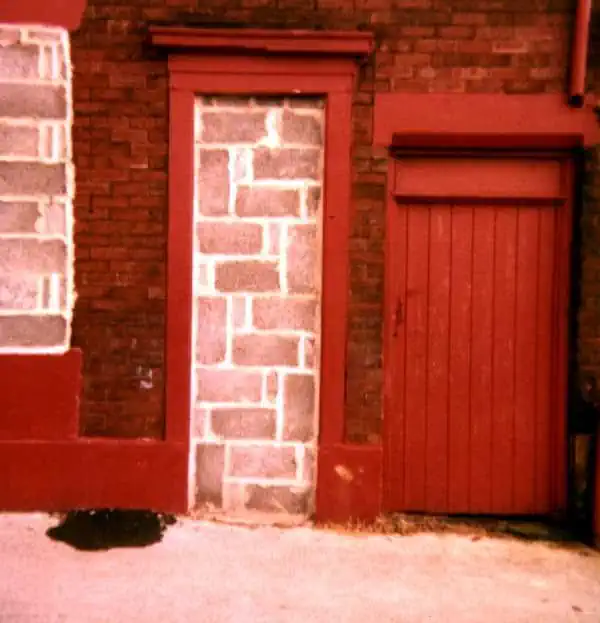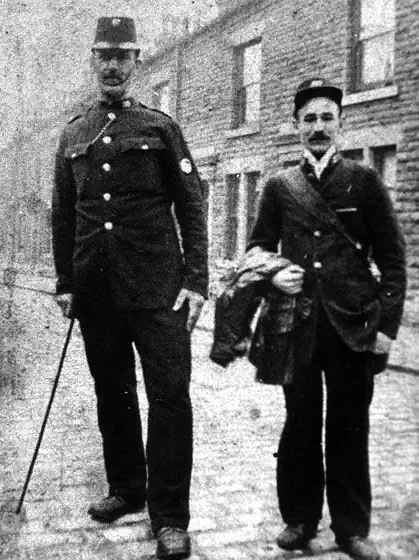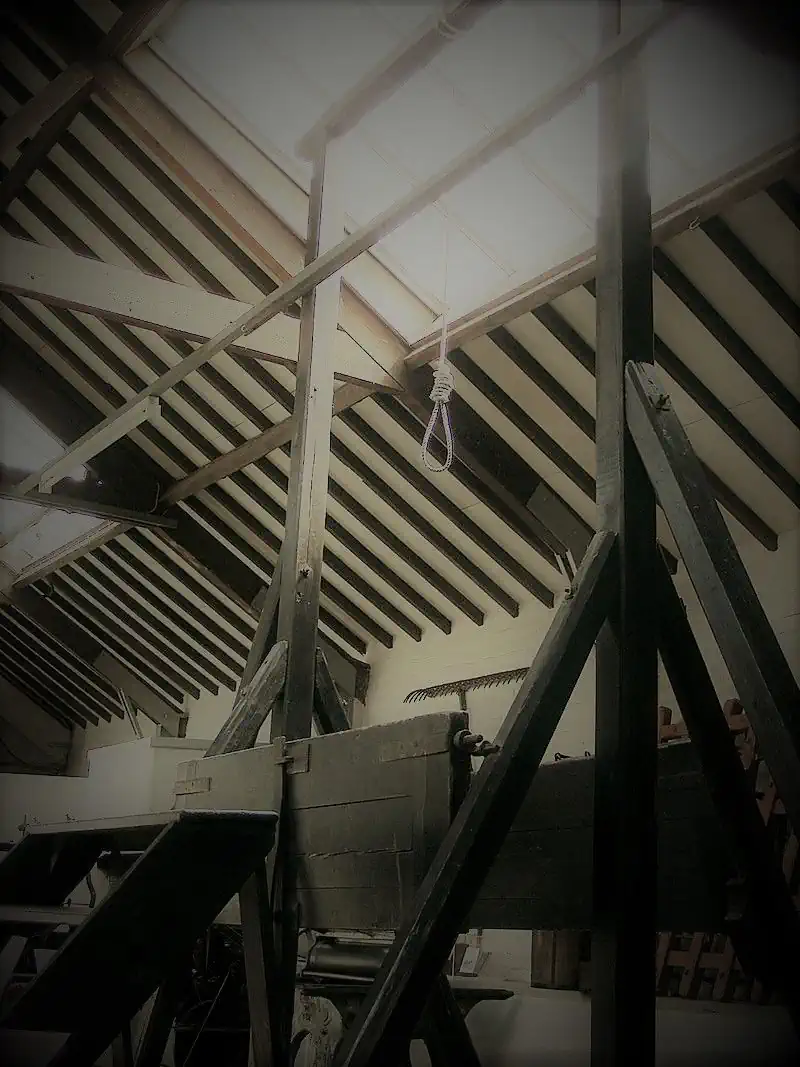Ashton-under-Lyne, A Murder on Turner Lane

Quick Summary
Content type: Local History
Read time: 3 – 4 min
In this post, I explore the unsettling case of Mary Ann Britland, Ashton-under-Lyne’s only known serial killer. Living on Turner Lane in 1886, she was accused of poisoning her daughter, husband, and a neighbour in a series of suspicious deaths.
Ashton-under-Lyne has many famous people in its long history, seeing events that are part of the fabric of the industrial north. The Chartists came and went, murdering a police officer here in the town, some paying for their crime and others not. About the same period as this in Bolton, Lancashire, a baby was born, Mary Ann Hague, born in 1847. Who could have ever known that this child of Bolton would turn into one of Ashton’s most infamous residents, reportedly killing her daughter in cold blood?
Mary Ann Hague would later become a convicted killer, Ashton-under-Lyne’s first and only serial murderer. If there are any more serial killers in the history of this historic town, I am not presently aware of them. It appears that Mary Ann married at the age of 19 years to Thomas Britland and a man of 24 years. The marriage produced two daughters, Elizabeth and Susannah Britland, and at some point, they became residents of Ashton-under-Lyne.
A Life in Ashton-under-Lyne
Mary Ann Britland, by 1886, was allegedly involved in an extramarital relationship with one Thomas Dixon, who was also married. His possible act of betrayal would have dreadful consequences on his life later in this story. In 1885, the Britland family moved to Turner Lane, Ashton-under-Lyne, with Susannah Britland going into service in Oldham. The rest of her family took up residence in a rented house, 133 Tuner Lane and to Mary Ann’s horror, it was infested by mice.
Mary Ann and Elizabeth both worked at Fisher & Jackson, Lees Street Mill, Ashton-under-Lyne. Her husband Thomas was a Cart Driver and worked as a barman in the Heaps Vaults, Old St, Ashton-under-Lyne. For the curious amongst you, this Ashton drinking establishment was opened by the Heap family in 1808 on Old St Ashton under Lyne. The building Thomas worked in is still located adjacent to the Shubar on Old Street; sometimes history is right under your nose.
Stopping the Gossip in Ashton-under-Lyne
This is where the story of Mary Ann Britland takes a turn for the worse; her possible extramarital activity with Thomas Dixon is discovered by her daughter, Elizabeth. Unfortunately for Elizabeth, she became ill on 8th March 1886 with convulsions and vomiting reported to the Doctor. Elizabeth died two days later on the 10th March 1886, with the death certificate being issued by Doctor Thompson, reporting the cause of death as convulsions, vomiting and spasms of the heart.
What is probably most gruesome about the death of Elizabeth is the fact that her mother tended to her for the whole two days she was sick. Even though later Mary Ann is arrested for her murder, it was noticed at the time, but not by the Doctor. Elizabeth’s hands were tightly clenched on her death, and this was only seen because traditionally another member of the community lays out the body of the deceased.
In this case, it was a middle-aged woman by the name of Sarah Lloyd who would play a role in the murder conviction of Mary Ann later on. Following this, Mary Ann collected the £10 insurance policy that had been taken out in the event of her Daughter’s death. These policies were taken out the pay for funeral costs, which at the time for a modest funeral would have been about £6 and probably a few shillings. In modern terms, that £10 policy would only be worth around £1300 in 2018, which would not even cover the cost of a funeral now.
A Second Death in Ashton-under-Lyne
A little over seven weeks later, Mary Ann purchased a packet of Hunters Infallible Vermin and Insect Destroyer from Kilvington’s Chemist, a poison used to kill mice in the home. But if we are to believe that Mary Ann Britland was a cold-blooded murderer. Her supposed purpose for this poison was to kill her husband, Thomas Britland, to remove another obstacle preventing her from a life with her alleged lover, Thomas Dixon.
It is reported that on the 30th April 1886, Thomas Britland became violently ill in their home after eating a meal with his wife. How vile would a person have to be to sit there and watch your spouse ingest the poison as they eat with him? But it is what Mary Ann did, and Thomas suffered for four days after this. Not dying until the 3rd May 1886, and visited by another local Doctor, he was pronounced dead, with the cause on his death certificate being epilepsy.
We have to assume that Mary Ann used a different Doctor, so she would not raise suspicion about two such similar deaths in her home. Her friend Mary Dixon came to her side to comfort Mary Ann on the tragedy of losing a daughter and her husband in such a short space of time. Sadly for Mary Dixon, we can only assume she was not aware of her own husband’s alleged betrayal of Mary Ann. Her kindness and proximity to Mary Ann Britland may have later cost her her life.
Suspicious Circumstances
Following the death of Thomas Britland, Mary Ann spent a great deal of time with the Dixon family, who were also residents of Turner Lane. This must have been a particularly uncomfortable period for Thomas Dixon, with his wife and his alleged lover eating at his table. Sadly for Mary Dixon, it was at this table that she became fatally unwell on the 13th May 1886. Mary, like Thomas and Elizabeth Britland, became violently ill, collapsing in spasms and dying in the early hours of the following day.
Doctor Thompson again attended to the awful ending to the life of Mary Dixon, her husband reportedly distraught by the death of his wife. As with the previous two deaths, the body of Mary Dixon was laid out by Sarah Lloyd, and at once noted that the hands of the deceased were clenched tightly. The same circumstances she had witnessed when attending the body of Elizabeth Britland.
Whether Sarah reported her suspicions or the fact that a Post-Mortem was carried out on Mary Dixon at the request of Doctor Thompson. But this death was treated with suspicion, and after she had asked some odd questions of the funeral caterer, John Law. Mary Ann Britland was then interviewed by the Ashton-under-Lyne constabulary and arrested on suspicion of murder. Initially, Thomas Dixon was also suspected of being involved, but this was later dismissed, and he was released.
Mary Ann Arrested for Murder

A Policeman in Ashton-under-Lyne
The post-mortem on Mary Dixon found traces of arsenic and strychnine in her stomach, and it was later found out. Mary Ann had also purchased Harrison’s Vermin Killer before the death of Mary Dixon and her Husband Thomas. With this overwhelming evidence, Mary Ann Britland was charged with murder, and the local community was shocked to the core at such events.
Although Thomas Dixon was admonished for any involvement in his wife’s death, you can be certain that his possible involvement was the talk of Ashton-under-Lyne. Once Mary Ann Britland was arrested, the case against her began to take shape. Autopsies were performed on the bodies of Thomas and Elizabeth Britland, and although no strychnine was found, traces of Arsenic were found in both of the alleged victims. With a powerful case against her, Mary Ann Britland was brought before Justice Cave at the Manchester Assize Courts.
Acting for the Defence was Mr Blair and for the prosecution Mr Addison, with the expert witness being Doctor Harris, who confirmed the presence of arsenic in the bodies of two of the victims. The only flaw here is the fact that arsenic was ever present in the 19th century. In even the most common items, such as wallpaper and dyes for clothing, plus many industrial processes that they would have been exposed to.
The Jury Is Out – Just Not In Ashton-under-Lyne
So, although the evidence pointed to Mary Ann being a prolific poisoner, because any strychnine would have disappeared from the bodies, the proof wasn’t absolute. This doubt, though, must have played on the minds of the Jurors in this case as the first time they were to deliberate over a verdict. They returned to the courtroom without a verdict, and doubt would have been reinforced by the certainty that if they convicted Mary Ann. She would certainly be sentenced to hang for her crimes, something maybe they would not want on their collective conscience.
When they returned to the courtroom without a verdict, they were sent to deliberate further over the evidence. At some stage during these proceedings, the Jury was informed that a motive was not required to convict Mary Ann of these killings, which would be unthinkable in the present. By 22:00pm on the day of the trial, the Jury had still not managed to agree on a verdict, and it is said that after further direction from Justice Cave, they returned a guilty verdict.
Once the word guilty had been read out in the court in Manchester, Justice Cave sentenced Mary Ann Britland to death. At this point, Mary Ann still protested her innocence to the court and continued to do so, as she was led away to her condemned cell. Whether Mary Ann was innocent or guilty, she must have been terrified at this point. During this time, she was visited by her mother, Hannah Hague and her daughter, Susannah Britland.
Mary Ann Britland Hangs
This visit would have occurred sometime after the trial on the 22nd of July and before she was executed 9th of August 1886. It is said that during this visit, Mary Ann allegedly confessed to her crimes in front of her Mother and Daughter. Yet another traumatic event in the life of the teenage Susannah, and dreadful for Mary Ann’s Mother to hear that the child she bore had committed such hideous crimes. You can only imagine the horror they would have felt on leaving Mary that day. Especially for Susannah on the realisation that she had lost her father and sister in such a way.

A Wooden gallows
On Monday, 9th August, a distraught and terrified Mary Ann Britland was led from her condemned cell by two female warders. So awful was her state of mind that she had to be supported for the entire journey to the Strangeways execution shed. Before Mary was taken to the gallows, two male warders half lifted, half carried Mary to the trap door. A noose was placed around Mary Ann Britland; her last words, heard by only a few people, were “Oh lord save me and have mercy upon me”.
At this point, one James Berry operated the lever that opened the trap door of the gallows. Mary Ann Britland’s body fell seven feet, the noose broke her neck and killed her immediately. Mary Ann became the first woman to be hanged at Strangeways Prison and is one of only four women executed there. That final second of her life must have been the most terrifying she had ever experienced; it does not mention whether Mary Ann was blindfolded or not. But even if she had been, that moment before death must have served as a terrible punishment for her crimes.
Ashton-under-Lyne – Serial Killer or Not
Whether Mary Ann Britland murdered three people can not be accepted as certain; the confession of a woman in her condemned cell is only hearsay. The poisons that killed the three people were present in many forms. Strychnine was often prescribed as medication at this time, arsenic appeared in so many industrial processes and even fabric dyes that its presence could not prove murder, and although it is claimed that Mary Ann was having an affair with Thomas Dixon, this was never proven.
If an affair with Thomas Dixon had been proven, then it is certain that he, too, would have faced trial for the deaths of his friends and spouse. The judge in the case, dismissing the motive of being required to convict, may have been responsible for a miscarriage of justice. I can see no possible way of ever resolving the issues of this long-past event, and Mary Ann Britland will remain Ashton-under-Lyne’s only ever serial killer.
The cramped terraces of Ashton-under-Lyne no longer exist as the slums they were in this period. Poor sanitation and terrible working conditions were responsible for the deaths of many of the poor. The story of Mary Ann Britland is both tragic and fascinating, and part of the fabric of history in Ashton-under-Lyne. The ghosts of the past still walk Turner Lane. Next time you pass by, think of the horror that occurred here. Gruesome death at the hands of a very ill woman, or did her final scream on the gallows end a tragedy? We will truly never know.
Get started in seconds!
Save your details, view past orders, and enjoy a faster checkout every time.